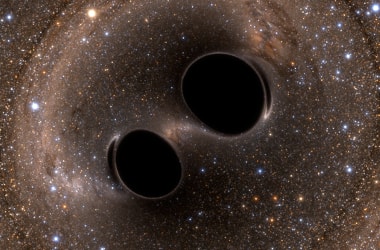
LIGO detects G-waves from black hole merger the 3rd time
The Laser Interferometer Gravitational-Wave Observatory (LIGO) in January 2017 detected another merger of two black holes forming gravitational waves.
The findings were published in the Physical Review Letters on 1 June 2017.
Named as GW170104, this is the third confirmed detection of gravitational waves coming from a binary black hole merger.
This time, the detection has revealed not merely a black hole merger, but also the alignment of the spins of the black holes. This can help the scientists in finding out the way the black holes were formed.
This supports the theory which says that black holes form independently in a star cluster, then sink to the centre of the cluster and eventually merge.
Until the first detection of gravitational waves by LIGO in 2015 (GW150914), it was not known that such massive black holes could exist.
The study had a major Indian contribution and the LIGO-India facility which will join the club in 2024. US-based LIGO has discovered a new population of black holes with masses that are larger than what had been seen before with X-ray studies.
The three confirmed detections by LIGO (GW150914, GW151226, GW170104) and one lower-confidence detection (LVT151012) point to a population of stellar-mass binary black holes that are larger than 20 solar masses.
The gravitational wave detection was for the first time, a chance event; second time a coincidence and third time a pattern.
The observation also yields support to Einstein’s General Theory of Relativity. According to this theory, gravitational waves, unlike light waves, will not disperse as they travel through space.
This too has been confirmed by the analysis of the presently detected signal.
Einstein's Theory: Know More - The general theory of relativity describes the force of gravity.
- Einstein wasn't the first to come up with such a theory — back in 1686 Isaac Newton formulated his famous inverse square law of gravitation.
- In 1905, Albert Einstein determined that the laws of physics are the same for all non-accelerating observers, and that the speed of light in a vacuum was independent of the motion of all observers.
- This was the theory of special relativity.
- It introduced a new framework for all of physics and proposed new concepts of space and time.